JHP Newsletter - 2007, No. 7, 21 November
Travel: South Africa
My recent five-week stay in South Africa was wonderful.
The first major destination was Kgalagadi Transfrontier Park which encompasses the former Kalahari Gemsbok National Park, and the cat encounters there were exceptional! I saw and shot lions mating and a small group of young male lions playing. African Wild Cats, which are the same species as domestic cats but a different subspecies, are very rare to see, and on this trip I saw four different cats, including a pair! The individual in the image below left was one of the pair and was strolling near the road early one morning. While raptors are generally good in Kgalagadi, on this trip the shooting opportunities weren't as good as on previous trips. However, I was able to get my first good shots of a Pygmy Falcon (below right). These falcons are very small, about half the size most "regulation size" falcons, and they are very skittish. In fact, this individual left after about 20 seconds of shooting, but that was enough to make her famous.
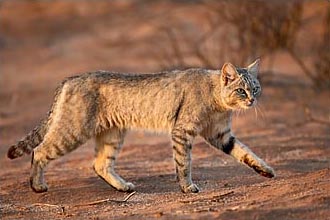
1/350 sec, f5.6, ISO 800

1/2000 sec, f8, ISO 400
Springbok is a nice overnight stop between Kgalagadi Transfrontier Park and the west coast, and I was there shortly before full moon which provided an opportunity to shoot the unique Quiver Trees around there with the rising moon. My favorite image, however, doesn't include the moon (below left).
The major destination on the west coast was Lambert's Bay and the large Cape Gannet colony at Bird Island. I was there in the middle of the nesting season, and several pairs were still necking (below center) which is part of their courtship behavior. Just south of Lambert's Bay is Elands Bay where many African Fur Seals hang out. After shooting them one afternoon, I started to shoot landscapes just before sunset and captured this wonderful wave breaking over the rocks (below right).
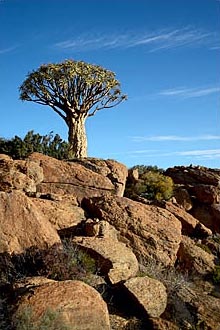
(at 40mm), 1/45 sec, f16, ISO 100
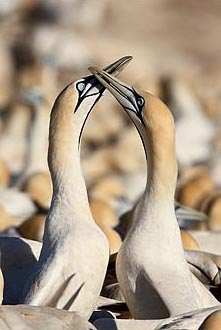
1/1500 sec, f11, ISO 400
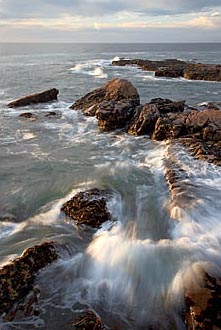
(at 35mm), 0.3 sec, f22, ISO 100
I spent some time in Simon's Town to shoot the African Penguins at Boulders Beach, and got some nice images during the relaxing stay. Then I went to Hermanus, on the south coast, for the first time, and was able to shoot Southern Right Whales from the shore. I got some decent shots of two whales breaching, and some nice shots of mothers with calves.
Mountain Zebra National Park had received a lot of rain shortly before I arrived, and most of my favorite game-viewing roads were closed when I arrived. So, I spent time in areas of the park where I hadn't shot much before, including the main road into the park. While I had shot some cooperative Ostrich along that road on a previous trip, the male I shot this time was uncooperative, mainly because he kept walking right up to my vehicle — it kept getting too close! However, by continuously moving the vehicle to create some space and then shooting as it came towards me, yet again, I was able to get a nice in-your-face face shot. The reason that the male was so "uncooperative" was because its mate was nearby, and I think he thought my white vehicle might move in and take his girl. Towards the end of my time with them, the pair mated, and afterwards the male was no longer quite as concerned about my vehicle.
Addo Elephant National Park was good once again for, you guessed it, elephants. I spent a few hours one morning by the Hapoor waterhole shooting a very large gathering of elephants (maybe 75-100). There were several babies, including the really young one pictured (below right).
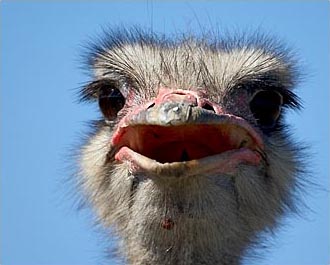
1/1500 sec, f9.5, ISO 500
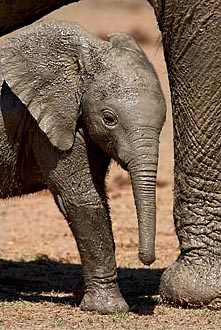
1/500 sec, f11, ISO 400
Hluhluwe Game Reserve (pronounced "Shlu-shlu-we"), and the neighboring Imfolozi Game Reserve, is usually good for obtaining unique images, especially of the rare Nyala. On this trip, I had a wonderful morning shooting Spotted-Backed or Village Weavers building their nests (below left). They build their nests by weaving strands of grass onto hanging tree branches over water.
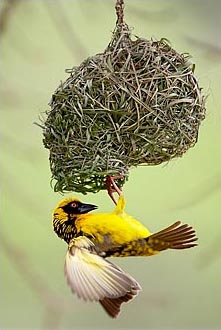
1/500 sec, f6.7, ISO 640
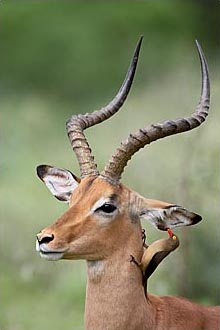
1/750 sec, f8, ISO 400
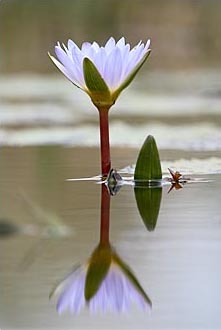
1/750 sec, f8, ISO 200
The last major destination was Kruger National Park, and shooting was slower this time than on previous trips, and the birdlife was especially scarce. However, I was able to get some good images, including the one above (center) of the Red-Billed Oxpecker cleaning a male Impala's ear. One of my favorite places to shoot in Kruger is at the Biyamiti causeway. There's a low dam immediately upstream, and the water level's less than a foot below a car's windowsill. Waterlilies were blooming, and their reflections in the rather calm water were nice (above right). A Nile Crocodile was also there, resting out of the water with its mouth open (below left).
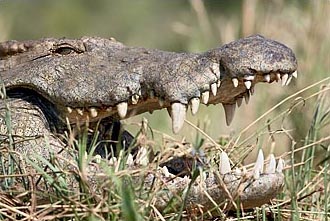
1/500 sec, f13, ISO 400
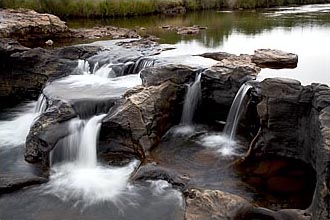
0.5 sec, f22, ISO 100
My final shooting stop was Bourke's Luck Potholes in the Blyde River Canyon. The Blyde River flows through a narrow canyon and has carved many interesting features, including potholes, into the rock. I've always found the waterfalls on the smaller Treur River, which feeds into the Blyde River there, to be more photogenic (above right).
Take care and happy shooting, and happy Thanksgiving to my American friends.
— James
James Hager Photography :: www.jameshagerphoto.com




